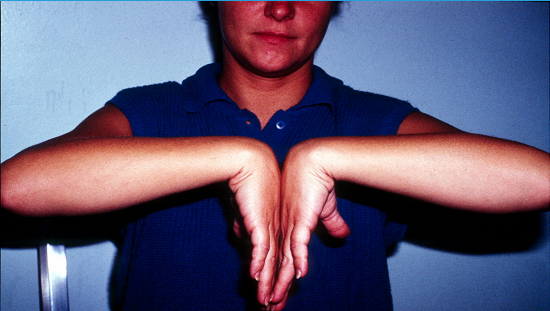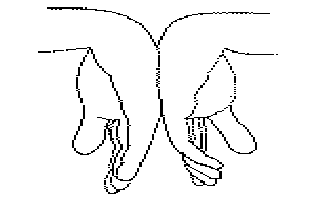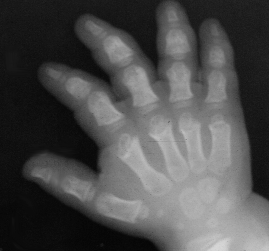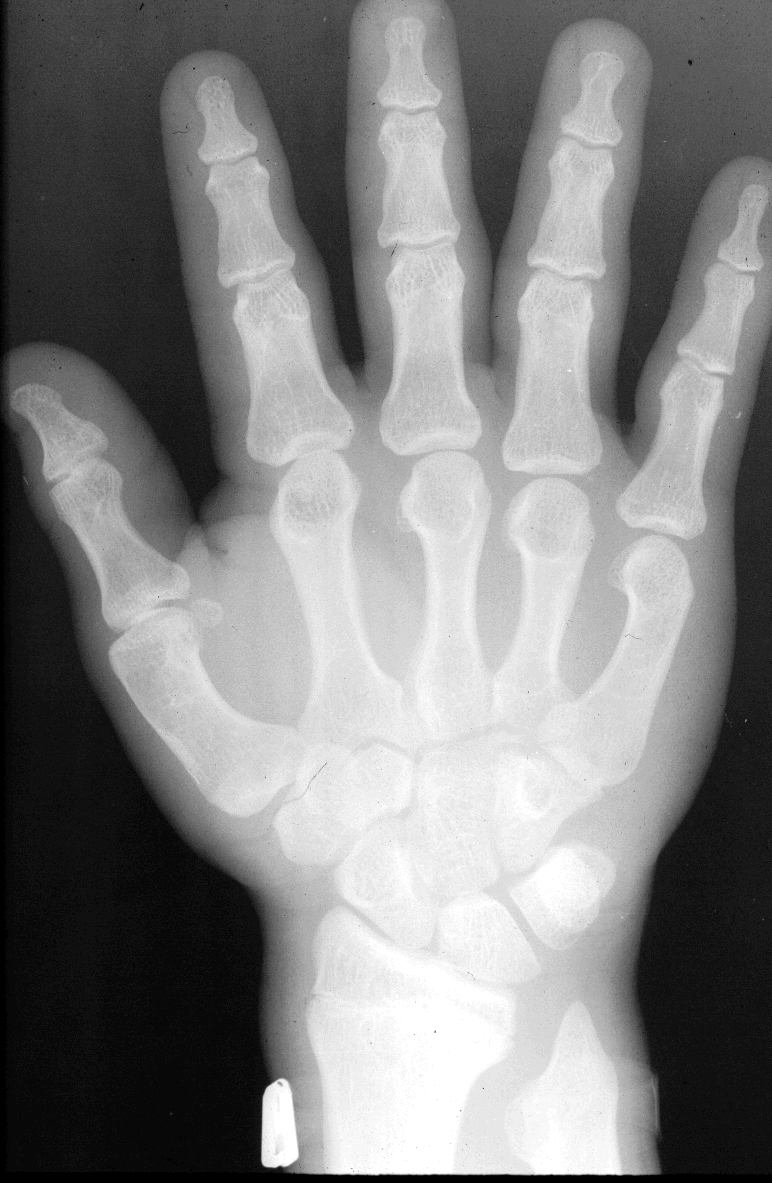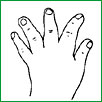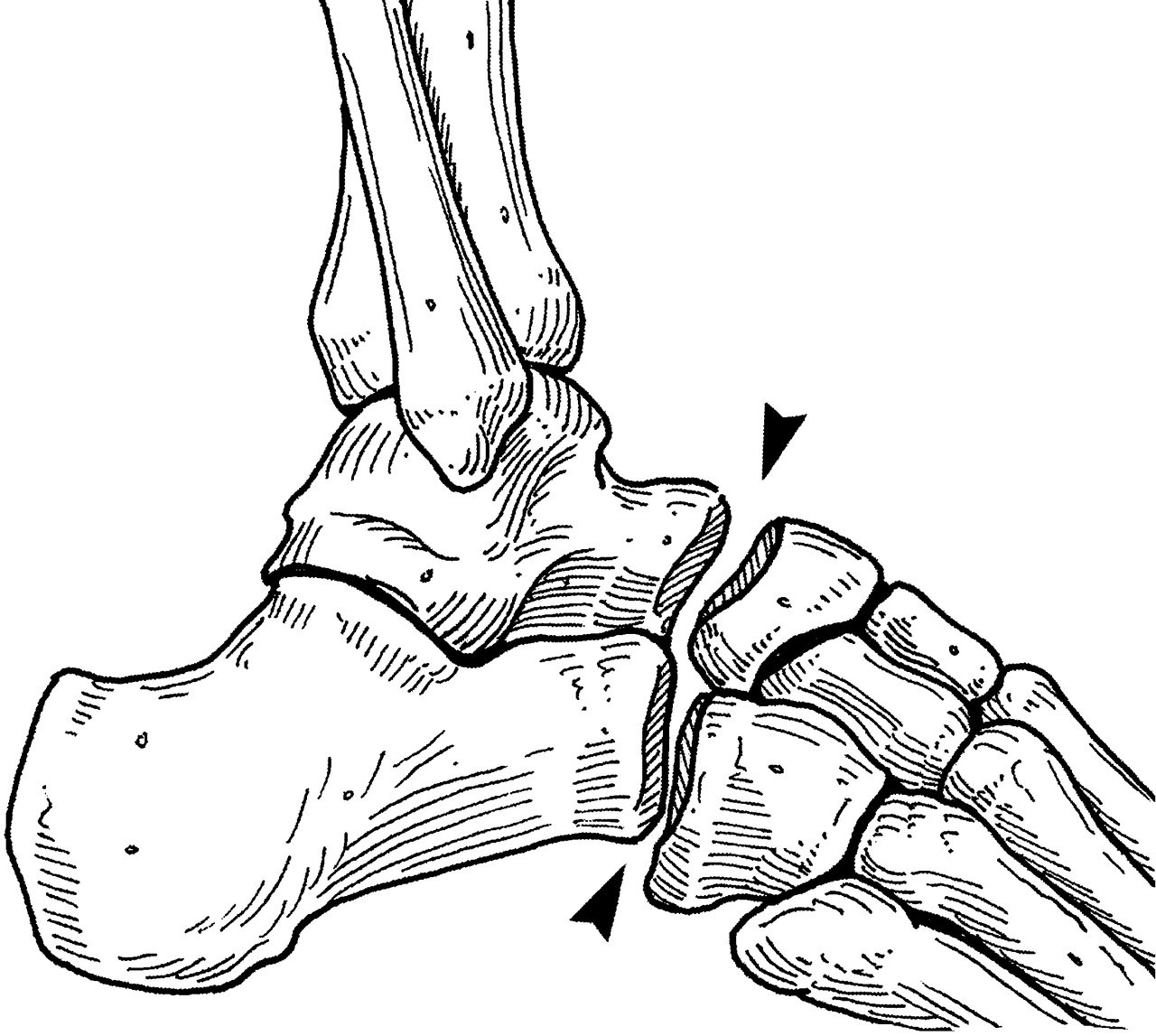INTRODUCTION :
Clubfoot can be classified as (1) postural or positional or (2) fixed or rigid. Postural or positional clubfeet are not true clubfeet. Fixed or rigid clubfeet are either flexible (ie, correctable without surgery) or resistant (ie, require surgical release, though this is not entirely true according to the Ponseti experience1, 2, 3).
The Pirani, Goldner, Di Miglio, Hospital for Joint Diseases (HJD), and Walker classifications have been published, but no classification system is universally used.4, 5, 6
(See also the Medscape article Success of nonsurgical treatment of clubfoot deformity and the eMedicine Radiology article Clubfoot.)
History of the Procedure
In the past, clubfoot surgery was performed in a way that did not differentiate severity. The same procedure was performed for all patients. Bensahel has proposed a more individualized approach (ie, addressing only the structures that are required are released). The surgery is tailored to the deformity. For example, if the forefoot is well corrected and externally rotated, if there is no cavus, but if there is still significant equinus, a posterior approach alone should suffice (see Intraoperative details).7
Problem
See Relevant Anatomy.
Frequency
The incidence of clubfoot is approximately 1 case per 1000 live births in the United States. The incidence differs among ethnicities. For example, it is close to 75 cases per 1000 live births in the Polynesian islands, particularly in Tonga.
The male-to-female ratio is 2:1. Bilateral involvement is found in 30-50% of cases. There is a 10% chance of a subsequent child being affected if the parents already have a child with a clubfoot.
Etiology
The true etiology of congenital clubfoot is unknown. Most infants who have clubfoot have no identifiable genetic, syndromal, or extrinsic cause.
Extrinsic associations include teratogenic agents (eg, sodium aminopterin), oligohydramnios, and congenital constriction rings. Genetic associations include mendelian inheritance (eg, diastrophic dwarfism; autosomal recessive pattern of clubfoot inheritance).
Cytogenetic abnormalities (eg, congenital talipes equinovarus [CTEV]) can be seen in syndromes involving chromosomal deletion. It has been proposed that idiopathic CTEV in otherwise healthy infants is the result of a multifactorial system of inheritance.8 Evidence for this is as follows:
- Incidence in the general population is 1 per 1000 live births.
- Incidence in first-degree relations is approximately 2%.
- Incidence in second-degree relations is approximately 0.6%.
- If one monozygotic twin has a CTEV, the second twin has only a 32% chance of having a CTEV.
Pathophysiology
Theories of the pathogenesis of clubfeet are as follows:
- Arrest of fetal development in the fibular stage
- Defective cartilaginous anlage of the talus
- Neurogenic factors: Histochemical abnormalities have been found in posteromedial and peroneal muscle groups of patients with clubfeet. This is postulated to be due to innervation changes in intrauterine life secondary to a neurologic event, such as a stroke leading to mild hemiparesis or paraparesis. This is further supported by a 35% incidence of varus and equinovarus deformity in spina bifida.
- Retracting fibrosis (or myofibrosis) secondary to increased fibrous tissue in muscles and ligaments: In fetal and cadaveric studies, Ponseti also found the collagen in all of the ligamentous and tendinous structures (except the Achilles tendon), and it was very loosely crimped and could be stretched. The Achilles tendon, on the other hand, was made up of tightly crimped collagen and was resistant to stretching. Zimny et al found myoblasts in medial fascia on electron microscopy and postulated that they cause medial contracture.1, 2, 9
- Anomalous tendon insertions: Inclan proposed that anomalous tendon insertions result in clubfeet.10 However, other studies have not supported this. It is more likely that the distorted clubfoot anatomy can make it appear that tendon insertions are anomalous.
- Seasonal variations: Robertson noted seasonal variations to be a factor in his epidemiologic studies in developing countries.11 This coincided with a similar variation in the incidence of poliomyelitis in the children in the community. Clubfoot was therefore proposed to be a sequela of a prenatal poliolike condition. This theory is further supported by motor neuron changes in the anterior horn in the spinal cord of these babies.
Clinical
Seek a detailed family history of clubfoot or neuromuscular disorders, and perform a general examination to identify any other abnormalities. Examine the feet with the child prone, with the plantar aspect of the feet visualized, and supine to evaluate internal rotation and varus. If the child can stand, determine if the foot is plantigrade, if the heel is bearing weight, and if it is in varus, valgus, or neutral.
Similar deformities are seen with myelomeningocele and arthrogryposis. Therefore, always examine for these associated conditions. The ankle is in equinus, and the foot is supinated (varus) and adducted (a normal infant foot usually can be dorsiflexed and everted, so that the foot touches the anterior tibia). Dorsiflexion beyond 90° is not possible.
The navicular is displaced medially, as is the cuboid. Contractures of the medial plantar soft tissues are present. Not only is the calcaneus in a position of equinus but also the anterior aspect is rotated medially and the posterior aspect laterally.
The heel is small and empty. The heel feels soft to the touch (akin to the feel of the cheeks). As the treatment progresses, it fills in and develops a firmer feel (akin to the feel of the nose or of the chin).
The talar neck is easily palpable in the sinus tarsi as it is uncovered laterally. Normally, this is covered by the navicular, and the talar body is in the mortise. The medial malleolus is difficult to palpate and is often in contact with the navicular. The normal navicular-malleolar interval is diminished.
The hindfoot is supinated, but the foot is often in a position of pronation relative to the hindfoot. The first ray often drops to create a position of cavus. The Ponseti method of closed management of clubfeet through manipulations and casting describes the elevation of the first metatarsal as a first step, even if it means seemingly exacerbating the supination of the foot.
The tibia often has internal torsion. This assumes special importance in the casting management of clubfeet, where care should be taken to rotate the feet into abduction, avoiding spurious tibial rotation through the knee.
Even following correction, the foot often remains short and the calf thin.
INDICATIONS OF SURGERY :
Traditionally, surgery is indicated when a plateau has been reached in nonoperative treatment. Surgery is usually performed when the child is of sufficient size to enable anatomy to be recognized.
RELEVANT ANATOMY :
- Bone
- Tibia: Slight shortening is possible.
- Fibula: Shortening is common.
- Talus: In equinus in the ankle mortise, with the body of the talus being in external rotation, the body of the talus is extruded anterolaterally and is uncovered and can be palpated. The neck of the talus is medially deviated and plantar flexed. All relationships of the talus to the surrounding bones are abnormal.
- Os calcis: Medial rotation and an equinus and adduction deformity are present.
- Navicular: The navicular is medially subluxated over the talar head.
- Cuboid: The cuboid is medially subluxated over the calcaneal head.
- Forefoot: The forefoot is adducted and supinated; severe cases also have cavus with a dropped first metatarsal.
- Muscle
- Atrophy of the leg muscles, especially in the peroneal group, is seen in clubfeet.
- The number of fibers in the muscles is normal, but the fibers are smaller in size.
- The triceps surae, tibialis posterior, flexor digitorum longus (FDL), and flexor hallucis longus (FHL) are contracted.
- The calf is of a smaller size and remains so throughout life, even following successful long-lasting correction of the feet.
- Tendon sheaths: Thickening frequently is present, especially of the tibialis posterior and peroneal sheaths.
- Joint capsules: Contractures of the posterior ankle capsule, subtalar capsule, and talonavicular and calcaneocuboid joint capsules commonly are seen.
- Ligaments: Contractures are seen in the calcaneofibular, talofibular, (ankle) deltoid, long and short plantar, spring, and bifurcate ligaments.
- Fascia: The plantar fascial contracture contributes to the cavus, as does contracture of fascial planes in the foot.
CONTRAINDICATIONS TO SURGERY :
No specific contraindications to surgery exist, although the child's size dictates that surgery is best performed at approximately age 6 months. With greater acceptance of the Ponseti conservative technique, surgery is seen to be a contentious issue. Surgery for clubfeet is no longer the only standard of care.
WORK UP :
Imaging Studies
- Imaging studies generally are not required to understand the nature or the severity of the deformity. Radiographs, however, are a useful baseline prior to and following surgical correction of the feet, closed Achilles tenotomy, or a limited posterior release. Radiographs show the true gain in foot (ankle) dorsiflexion and confirm the appearance of an iatrogenic rockerbottom foot should one result. Occasionally, radiographs are necessary to diagnose clubfeet associated with tibial hemimelias.
- Radiographs
·
- Talocalcaneal parallelism is the radiographic feature of clubfeet. Simulated weight-bearing x-rays are used for infants who have not commenced walking. Positioning for foot x-rays is very important. The anteroposterior (AP) view is taken with the foot in 30° of plantar flexion and the tube at 30° from vertical. The lateral view is taken with the foot in 30° of plantar flexion.
- AP and lateral views also can be taken in full dorsiflexion and plantar flexion. This is especially important when measuring the total amount of dorsiflexion achieved at the end of treatment, as well as the relative position of the talus and calcaneum.
- Measure the talocalcaneal angle in the AP and lateral films. AP lines are drawn through the center of the long axis of the talus (parallel to the medial border) and through the long axis of the calcaneum (parallel to the lateral border), and they usually subtend an angle of 25-40°. Any angle less than 20° is considered abnormal.
- The AP talocalcaneal lines are almost parallel in clubfeet. As the feet correct with casting or surgery, the calcaneus rotates externally, and the talus reciprocally also derotates to a lesser degree to give a convergent talocalcaneal angle.
- Lateral lines are dawn through the midpoint of the head and body of the talus and along the bottom of the calcaneum, usually 35-50° Clubfoot ranges between 35° and negative 10°.
- The lateral talocalcaneal lines are almost parallel in clubfeet. As the feet correct with casting or surgery, the calcaneum dorsiflexes relative to the talus to give a convergent talocalcaneal angle.
- These 2 angles (AP and lateral) are added to derive the talocalcaneal index, which in a corrected foot should be more than 40°.
- The AP and lateral talar lines normally pass through the center of the navicular and the first metatarsal.
- In older children, a flat top talus can be demonstrated radiologically if the talus is sufficiently calcified, but care is required for positioning of the foot.
- A lateral film with the foot held in maximal dorsiflexion is the most reliable method of diagnosing an uncorrected clubfoot, since the absence of calcaneal dorsiflexion is evidence that the calcaneus is still locked in varus angulation under the talus.
TREATMENT :
Medical therapy
Aims of medical therapy are to correct the deformity early and fully and to maintain the correction until growth stops.
Traditionally, 2 categories of clubfeet are identified, as follows:
- Easy or correctable clubfeet correct with manipulation, casting, and splintage alone.
- Resistant clubfeet that require surgery are those that respond poorly to splintage and relapse quickly following seemingly successful manipulative treatment. These clubfeet require early operative management. These feet are said to be associated with a thin calf and a small high heel.
The Pirani scoring system, devised by Shafiq Pirani, MD, of Vancouver, BC, consists of 6 categories, 3 each in the hindfoot and the midfoot. The categories are curvature of the lateral border (CLB) of the foot, medial crease (MC), uncovering of the lateral head of the talus (LHT), posterior crease (PC), emptiness of the heel (EH), and degree of dorsiflexion (DF). The first 3 constitute the midfoot score, and the last 3 constitute the hindfoot score.4, 12
Each category is scored as 0, 0.5, or 1. The least (best) total score for all categories combined is 0, and the maximum (worst) score is 6. The Pirani scoring system can be used to identify the severity of the clubfoot and to monitor the correction.
It is necessary to provide counsel and advice to parents. They should be reassured that they are in no way responsible for the deformity and that it is unlikely to be reproduced in subsequent pregnancies.
Traditional nonoperative treatment
With traditional nonoperative treatment, splintage begins at 2-3 days after birth. The order of correction is as follows:
- Forefoot adduction
- Forefoot supination
- Equinus
Attempts to correct equinus first may break the foot, producing a rockerbottom foot. Force must never be used. Merely bring the foot to the best position obtainable and maintain this position by either strapping every few days or by changing casting weekly until either full correction is obtained or until correction is halted by some irresistible force.
The corrected position is maintained for several months. Surgery should be used as soon as it is obvious that conservative treatment is failing (persisting deformity, rockerbottom deformity, or rapid relapse after correction has stopped).
By 6 weeks, it is usually apparent that the foot is easy or resistant; this is confirmed on x-ray due to the orientation of the bones. Reported success rates for these traditional casting methods are 11-58%.
Ponseti method
This method was developed by Ignacio Ponseti, MD, of the University of Iowa. The premise of the method is based on the cadaveric and clinical observations of Dr. Ponseti.1, 3 Steps are as follows:
- The calcaneal internal rotation (adduction) and plantar flexion is the key deformity. The foot is adducted and planter-flexed at the subtalar joint, and the goal is to abduct the foot and dorsiflex it. In order to achieve correction of the clubfoot, the calcaneum should be allowed to rotate freely under the talus, which also is free to rotate in the ankle mortise. The correction takes place through the normal arc of the subtalar joint. This is achieved by placing the index finger of the operator on the medial malleolus to stabilize the leg and levering on the thumb placed on the lateral aspect head of the talus while abducting the forefoot in supination. Forcible attempts at correcting the heel varus by abducting the forefoot while applying counter pressure at the calcaneocuboid joint prevents the calcaneum from abducting and therefore everting.
- Foot cavus increases when the forefoot is pronated. If cavus is present, the first step in the manipulation process is to supinate the forefoot by gently lifting the dropped first metatarsal to correct the cavus. Once the cavus is corrected, the forefoot can be abducted as outlined in step 1.
- Pronation of the foot also causes the calcaneum to jam under the talus. The calcaneum cannot rotate and stays in varus. The cavus increases as outlined in step 2. This results in a bean-shaped foot. At the end of step 1, the foot is maximally abducted but never pronated.
- The manipulation is carried out in the cast room, with the baby having been fed just prior to the treatment or even during the treatment. After the foot is manipulated, a long leg cast is applied to hold the correction. Initially, the short leg component is applied. The cast should be snug with minimal but adequate padding. The authors paint or spray the limb with tincture of benzoin to allow adherence of the padding to the limb. The authors prefer to apply additional padding strips along the medial and lateral borders to facilitate safe removal of the cast with a cast saw.
The cast must incorporate the toes right up to the tips but not squeeze the toes or obliterate the transverse arch. The cast is molded to contour around the heel while abducting the forefoot against counter pressure on the lateral aspect of the head of the talus. The knee is flexed to 90° for the long leg component of the cast. The parents can soak these casts for 30-45 minutes prior to removal with a plaster knife. The authors' preferred method is to use the oscillating plaster saw for cast removal. The cast is bivalved and removed. The cast then is reconstituted by coapting the 2 halves. This allows for monitoring of the progress of the forefoot abduction and, in the later stages, the amount of dorsiflexion or equinus correction.
- Forcible correction of the equinus (and cavus) by dorsiflexion against a tight Achilles tendon results in a spurious correction through a break in the midfoot, resulting in a rockerbottom foot. The cavus should be separately treated as outlined in step 2, and the equinus should be corrected without causing a midfoot break.
It generally takes up to 4-7 casts to achieve maximum foot abduction. The casts are changed weekly. The foot abduction (correction) can be considered adequate when the thigh-foot axis is 60°
After maximal foot abduction is obtained, most cases require a percutaneous Achilles tenotomy. This is performed in the cast room under aseptic conditions. The local area is anesthetized with a combination of a topical lignocaine preparation (eg, EMLA cream) and minimal local infiltration of lidocaine. The tenotomy is performed through a stab incision with a round tip (#6400) Beaver blade. The wound is closed with a single absorbable suture or with adhesive strips.
The final cast is applied with the foot in maximum dorsiflexion, and the foot is held in the cast for 2-3 weeks.
- Following the manipulation and casting phase, the feet are fitted with open-toed straight-laced shoes attached to a Dennis Brown bar. The affected foot is abducted (externally rotated) to 70° with the unaffected foot set at 45° of abduction. The shoes also have a heel counter bumper to prevent the heel from slipping out of the shoe. The shoes are worn for 23 hours a day for 3 months and are worn at night and during naps for up to 3 years.
- In 10-30% of cases, a tibialis anterior tendon transfer to the lateral cuneiform is performed when the child is approximately 3 years of age. This gives lasting correction of the forefoot, preventing metatarsus adductus and foot inversion. This procedure is indicated in a child aged 2-2.5 years with dynamic supination of the foot. Prior to surgery, cast the foot in a long leg cast for a few weeks to regain the correction.
Surgical therapy
Surgery is indicated if nonoperative treatment has not been successful.
Preoperative details
The operating room is kept warm, and a general anesthetic is used. The usual position is supine with the foot resting over the contralateral leg in a figure-of-four position. Some surgeons prefer the lateral decubitus or even a prone position. A tourniquet generally is used, and the surgery is performed using optical loupe magnification.
Intraoperative details
Incision
Options for incisions include the following:
- Cincinnati: This is a transverse incision that extends from the anteromedial (region of navicular-cuneiform joint) to the anterolateral (just distal and medial to the sinus tarsi) aspect of the foot and over the back of the ankle at the level of the tibiotalar joint.13
- Turco curvilineal medial or posteromedial incision: This incision can lead to wound breakdowns, especially at the corner of the vertical and medial limbs.14, 13 To avoid this, some surgeons prefer the following options:
- Three separate incisions - A posterior vertical, a medial, and a lateral
- Two separate incisions - Curvilinear medial and posterolateral
Any approach should be able to address the release in all quadrants, which are as follows:
- Plantar: Plantar fascia, abductor hallucis, flexor digitorum brevis, long and short plantar ligaments
- Medial: Medial structures, tendon sheaths, talonavicular and subtalar release, tibialis posterior, FHL, and FDL lengthening
- Posterior: Ankle and subtalar capsulotomy, especially releasing post talofibular and tibiofibular ligaments and the calcaneofibular ligaments
- Lateral: Lateral structures, peroneal sheath, calcaneocuboid joint, and completion of talonavicular and subtalar release
Surgical clubfoot release
In the past, clubfoot surgery was performed in a way that did not differentiate severity. The same procedure was performed for all patients. Bensahel proposed a more individualized approach (ie, addressing only the structures that are required are released). The surgery is tailored to the deformity. For example, if the forefoot is well corrected and externally rotated, if there is no cavus, but if there is still significant equinus, a posterior approach alone should suffice.15, 16, 7
Any approach should afford adequate exposure. Structures to be released or lengthened are the following:
- Achilles tendon (ETA)
- Tendon sheaths of the muscles crossing the subtalar joint
- Posterior ankle capsule and deltoid ligament
- Inferior tibiofibular ligament
- Fibulocalcaneal ligament
- Capsules of the talonavicular and subtalar joints
- Division of associated ligaments around the subtalar joint
- Plantar fascia and intrinsic muscles
The longitudinal axis of the talus and calcaneum should be separated by about 20° in the lateral projection, and the calcaneal angle should be a right angle to the shaft of the tibia.
The correction is held with wires at the talocalcaneal joint, talonavicular joint, or both, possibly with a plaster cast. The wound should never be forcibly closed. It can be left open to granulate and heal by secondary intention or even grafted using split-thickness skin grafts.
Surgical treatment should take into account the age of the patient.
- In children younger than 5 years, correction can be achieved with soft-tissue procedures.
- Children older than 5 years require bony reshaping (eg, dorsolateral wedge excision of the calcaneocuboid joint [Dillwyn Evans procedure] or osteotomy of the calcaneum to correct varus).
- Lateral wedge tarsectomy or triple fusion (arthrodesis) is required if the child is older than 10 years (salvage procedures).
Posterior release steps, in brief, are as follows:
- Longitudinal incision
- Z-lengthened tendocalcaneus
- Identify neurovascular (NV) bundle
- Tendon sheaths of FHL, FDL, and tibialis posterior released; tendons not elongated
- Ankle joint capsule opened; talofibular, calcaneofibular, and seep portion of deltoid ligaments released (blunt dissection)
- Release of distal tibial and fibula ligaments
- Posterior release of the subtalar joint
- With foot held just above neutral, tendocalcaneum is repaired and skin closed
- Plaster-of-Paris cast in corrected position for 4 weeks, followed by splints until maturity
A posteromedial release is performed as follows (Turco procedure14, 13):
- Make a medial incision 8-9 cm long from the base of the first metatarsal to the tendocalcaneum, curving it just inferior to the medial malleolus without undermining skin. Mobilize and expose the tendons of the tibialis posterior, FDL, FHL, tendo Achilles, and posterior neurovascular bundle.
- Continuing the incision in the sheaths of FDL and FHL, divide the master knot of Henry beneath the navicular. Divide the spring ligament, detaching it from the sustentaculum tali and the origin of the abductor hallucis. Release the remaining contractures starting posteriorly. Lengthen the tendo Achilles (Z-plasty), detaching the medial half of the tendon insertion. Retract the neurovascular bundle and FHL anteriorly to expose the posterior aspect of the ankle and subtalar joints. Then incise the posterior capsule of the ankle joint under direct visualization and the posterior talofibular ligament if required at this time. Divide the subtalar capsule and calcaneofibular ligament.
- Retract the neurovascular bundle posteriorly, and divide the tibiocalcaneal part of the deltoid ligament. Lengthen the tibialis posterior if it is contracted. Open the talonavicular joint and divide its capsule but avoid damaging the articular surface. Then release the subtalar ligaments and reduce the navicular onto the head of the talus, which should properly align the other tarsal bones. Ensure that the relationship of the talus to the calcaneus and navicular is correct, and stabilize the foot with Kirschner wires. The first wire is passed from the dorsum of the foot across the first metatarsal shaft, the medial cuneiform, the navicular, and into the talus. A second wire fixes the subtalar joint, and this should maintain the foot in the corrected position.
- Apply an above-the-knee plaster-of-Paris cast, which is changed at 3 weeks and maintained to 6 weeks. The foot is initially held in slight equinus if there is tension on the skin closure, which is corrected at the time of cast change. Splintage is continued for at least 4 months after surgery, and night splints are used for several years.
The Ilizarov correction17, 18, 19 is as follows:
- Ilizarov correction is used for recurrent clubfeet, especially in conditions such as arthrogryposis.
- The calcaneum is held with 2 opposing olive-tipped wires.
- The distractor force, in the form of heel-pushing distractors, must be posteriorly directed to prevent anterior subluxation of the talus in the ankle mortise.
Postoperative details
Pay meticulous attention to the wound after surgery. If the skin closure is difficult, it is better to leave the wound open and allow it to granulate for a delayed primary or secondary closure or allow it to heal by granulation tissue. Skin grafts also can be used to cover the defect. The plaster splint should be only lightly applied, and the wound should be inspected regularly.
Follow-up
The transfixion pins usually are removed in 3-6 weeks. The foot requires splintage in appropriate footwear for 6-12 months.
COMPLICATIONS :
- Infection (rare)
- Wound breakdown: Release skin retractors every 30 minutes, and release the tourniquet before closing the wound and applying a cast.
- Stiffness and restricted range of motion: Early stiffness correlates with a poor result.
- Avascular necrosis of the talus: A 40% incidence of avascular necrosis of the talus occurs with combined simultaneous medial and lateral release.
- Persistent intoeing: This is quite common. Persistent intoeing is not due to tibial intorsion but rather is due to insufficient external rotation correction of the subtalar joint.
Overcorrection is associated with the following:
- Release of the interosseous ligament of the subtalar joint
- Excess lateral displacement of the navicular on the talus
- Overlengthening of tendon units
For residual deformity following the initial surgery, rule out neurologic causes of recurrence (eg, tethered cord). Residual deformity may be one of the following:
- Dynamic: With residual adductus and supination that are fully correctable passively, treat with split anterior tibial tendon transfer.
- Fixed: If scarring is not excessive and the patient is younger than 5 years, repeat the release. If the patient is older than 5 years, a bony procedure to straighten the lateral border of the foot is required.
Options to correct adductus are as follows:
- Metatarsal osteotomy: This operation creates a secondary deformity to compensate for a primary deformity in the tarsus. It rarely is indicated.
- Cuboid decancellation
- Calcaneocuboid fusion: The Dillwyn Evans procedure consists of a medial and post release together with excision and fusion of the calcaneocuboid joint.20 It should be reserved for patients older than 4 years. These 2 procedures aim to shorten the lateral side of the foot.
- Lengthening the medial side of the foot (eg, talar osteotomy): This is not widely performed. Avascular necrosis is a risk.
Options to correct residual hindfoot deformity are the following:
- For heel varus: Open the medial wedge, or close the lateral wedge. Lateral displacement os calcis osteotomy is preferred.
- For residual cavus and adductus: Perform a wedge tarsectomy.
- For failed feet: Perform a triple arthrodesis.
OUTCOME AND PROGNOSIS
Approximately 50% of clubfeet in newborns can be corrected nonoperatively. Ponseti reports an 89% success rate using his technique (including an Achilles tenotomy). Others report success rates of 10-35%. Most series report 75-90% satisfactory results of operative treatment (appearance and function of the foot). The amount of motion in the joints of the foot and ankle correlates with the degree of patient satisfaction.21, 22, 23
Satisfactory results were obtained in 81% of cases, and the range of ankle movement was a major factor in determining the functional result, which again was influenced by the degree of talar dome flattening (suggesting that the primary bone deformity present at birth dictates the eventual result of treatment). Forty-four percent of patients had no dorsiflexion beyond neutral, and 38% of patients required further surgery (nearly two thirds of these were bony procedures).
Recurrence rates of deformity were reported at around 25%, with a range of 10-50%. Menelaus reported a 38% recurrence rate.24, 25
The best results were obtained with children older than 3-4 months with a foot large enough to perform the surgery without compromise (longer than 8 cm, as specified by Simons26, 27). The age at operation is directly related to the result. Less than satisfactory results may be associated with overcorrection, which occurs in approximately 15% of cases.
Previous surgery seems to have a deleterious effect on the result.
FUTURE AND CONTROVERSIES :
As small infants with operated clubfeet have grown into heavy adults, they have been prone to painful stiff feet, despite good correction.
Deitz and Cooper published a 30-year follow-up study of patients treated with the Ponseti method.28 These cases had comparatively pain-free supple feet. The Ponseti method is gaining mainstream acceptance as evidenced by the emergence of Ponseti clubfeet centers at major teaching hospitals across the United States.
Of the patients who have been monitored long term, those who are heavy and those in jobs involving long periods on their feet (especially performing manual labor) were found to be more likely to have painful feet. This correlated with the trend seen in the general population at large.


